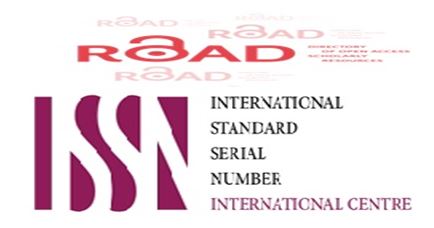QT interval analysis in type 2 diabetic patients
DOI:
https://doi.org/10.32007/jfacmedbagdad.524958Keywords:
ECG – QT interval – Diabetes mellitus.Abstract
Background: The electrocardiographic QT interval has been extensively studied in diabetes mellitus. Recently, there has been increasing interest in the relationship between diabetes and QT abnormalities .The QT interval, which is easily obtained from a standard resting electrocardiogram( ECG), reflected the total duration of ventricular myocardial depolarization and repolarization. The heart rate corrected QT interval (QTc) by Bazett's formula on the electrocardiogram has been proposed as a risk factor for ventricular arrhythmias in diabetes mellitus. Dispersion of QT(QTd) is defined as the difference between maximum and minimum QT interval QT interval on 12 lead ECG, which reflected spatial ventricular repolarization in homogeneity ,has been report to increase in diabetic subjects compare with non diabetic subjects.
Patients and Methods: Type 2 diabetic patients (n=80) and healthy subjects (n=25) were required to have 12-lead ECG suitable for QT analysis ,QT interval was measured in each lead to
found(maximum, minimum, and mean ).QT interval vary according to the heart rate, it can be corrected using Bazett's formula to give QTc interval, and to found (maximum, minimum, and mean).Dispersion of QT interval(QTd) was calculate using the difference between the maximum and minimum QT interval duration as same as for dispersion of corrected QT interval(QTcd).
Result: There were significant difference in QT interval indices between type 2 diabetic and healthy subjects (P<0.05) as well as the correct QT interval indices. ROC curve analysis of QT and QTc interval duration parameters demonstrated that no QT parameters performs better than maximum and minimum of QT and QTc, areas under ROC curve were(0.69 and 0.66 P<0.001)for maximum and mean QT respectively and (0.80 and 0.75 P<0.001) for maximum and mean QTc respectively. From this result we can say that QTc parameters better than QT parameters in context of patients and control differences. In multiple linear regression models, maximum, mean, and dispersion of QT interval were significantly affect by diabetes mellitus after adjustment for age, gender, body mass index (BMI), and heart rate. Whereas, only maximum and mean QTc were significantly affected by diabetes mellitus after adjustment for age, gender, and BMI. Prolongation of QT interval (QTc and QTd) also seen in a diabetic subjects which significant different as compare to the healthy subjects.
Conclusion: The result of this study indicate that corrected QT interval (maximum and mean)in a routine ECG is a useful marker to identify the QT abnormalities differentiating diabetes type 2 from healthy subjects.
Downloads
Published
Issue
Section
License
Permit others to copy and distribute the manuscript; to extract, revise, and create another derivative
works of or from the manuscript (e.g., a translation); to incorporate the manuscript into a
collective work; and to text or data mine the article, even for commercial purposes, provided that
the author(s) is/are credited; the article's modifications should not harm the author's honor or
reputation; and the article should not be altered in a way that would cause the author to lose them
reputation. The Creative Commons Attribution 4.0 International License (CC BY 4.0) has more
information.




















 Creative Commons Attribution 4.0 International license..
Creative Commons Attribution 4.0 International license..


